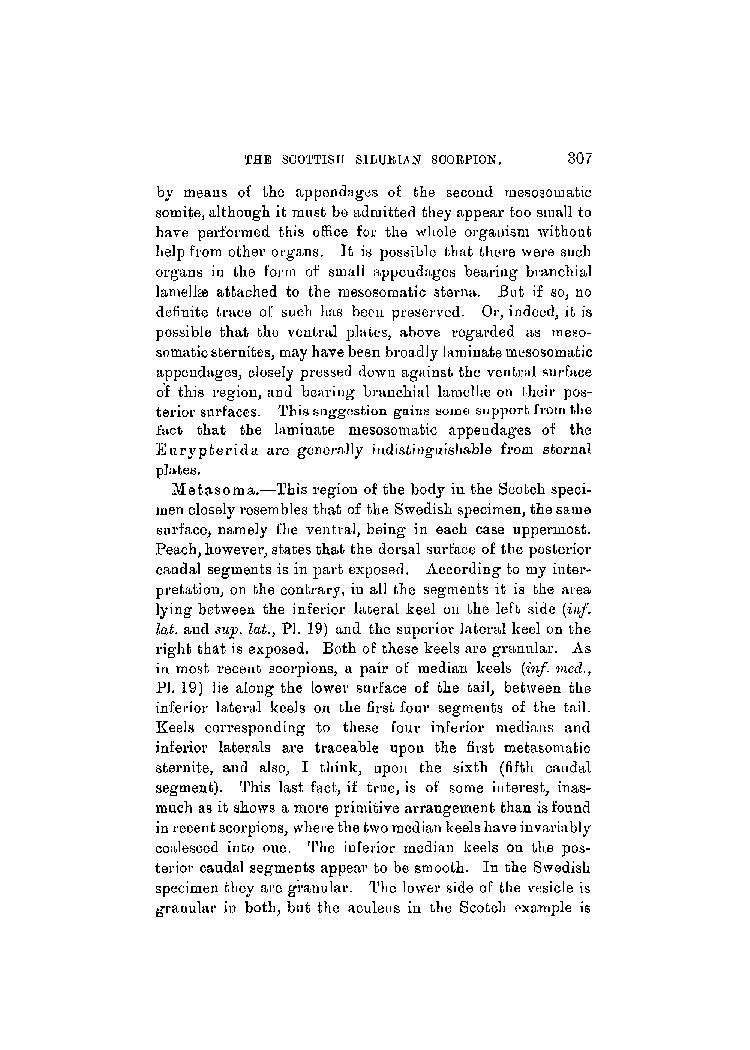by means of the appendages of the second mesosomatic somite, although it must be admitted they appear too small to have performed this office for the whole organism without help from other organs. It is possible that there were such organs in the form of small appendages bearing branchial lamellæ attached to the mesosomatic sterna. But if so, no definite trace of such has been preserved. Or, indeed, it is possible that the ventral plates, above regarded as mesosomatic sternites, may have been broadly laminate mesosomatic appendages, closely pressed down against the ventral surface of this region, and bearing branchial lamellæ on their posterior surfaces. This suggestion gains some support from the fact that the laminate mesosomatic appendages of the Eurypterida are generally indistinguishable from sternal plates.
Metasoma.—This region of the body in the Scotch specimen closely resembles that of the Swedish specimen, the same surface, namely the ventral, being in each case uppermost. Peach, however, states that the dorsal surface of the posterior caudal segments is in part exposed. According to my interpretation, on the contrary, in all the segments it is the area lying between the inferior lateral keel on the left side (inf. lat. and sup. lat., Pl. 19) and the superior lateral keel on the right that is exposed. Both of these keels are granular. As in most recent scorpions, a pair of median keels (inf. med., Pl. 19) lie along the lower surface of the tail, between the inferior lateral keels on the first four segments of the tail. Keels corresponding to these four inferior medians and inferior laterals are traceable upon the first metasomatic sternite, and also, I think, upon the sixth (fifth caudal segment). This last fact, if true, is of some interest, inasmuch as it shows a more primitive arrangement than is found in recent scorpions, where the two median keels have invariably coalesced into one. The inferior median keels on the posterior caudal segments appear to be smooth. In the Swedish specimen they are granular. The lower side of the vesicle is granular in both, but the aculeus in the Scotch example is
